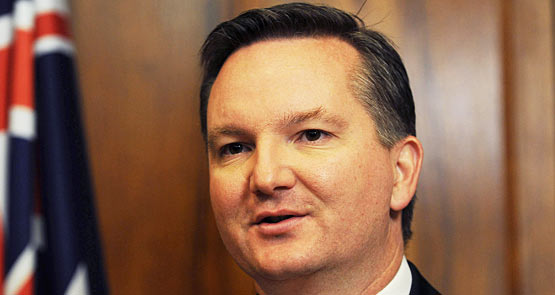
If, as the Opposition and some in the media claim, Treasury has been politicised by Labor, it’s got a funny way of showing it: yet again the government has been forced into a round of spending cuts and tax rises to maintain its surplus commitment in the face of under-performing revenue — not for this financial year, which was abandoned last December, but for two years hence.
The bank levy doesn’t quite fall into “chasing revenue down” category — it will do little to offset the $33.3 billion in lost revenue over the next four years, and only make a substantial impression beyond 2016. But the tobacco excise increase is a venerable revenue-raising trick, as is yet another increase in the public service efficiency dividend (above and beyond the recent Special Executive Service efficiency dividend), as well as yet another lift in visa application charges.
Political victimless crimes, more or less — unless you’re a smoker, a foreigner, or a public servant.
But Treasurer Chris Bowen has stayed consistent with Wayne Swan’s decision not to keep chasing revenue down in the current economic environment by chasing more immediate cuts: the statement on the whole is net more spending this year and next, and then substantial net savings in 2015-16 and 2016-17.
That decision is reinforced by the gloomier economic picture this statement presents — much higher unemployment, over 6% for the first time in years, lower economic growth and, from the government’s point of view, the real killer: a big fall in forecast nominal GDP growth, which is the main reason behind the $33 billion writedown in revenues.
With this forecast, an interest rate cut now seems more likely next week, assuming the Reserve Bank shares Treasury gloomier prognosis for the Australian economy for the remainder of this calendar year and next.
It’s a tough environment in which to go into an election — but as Prime Minister Kevin Rudd and Bowen have been at pains to say since they replaced Julia Gillard and Swan, this is an economy in transition. And that transition just got more difficult.
Related stories:








Interest rate cuts can be economic poison. A fascinating argument is that as interest rates are lowered, businesses that have already taken on debt at fixed rates are disadvantaged relative to competitors. The incentive is to not take on debt until interest rates have bottomed. This may exacerbate the business cycle.
Accounting principles don’t take account of this problem – is the liquidated value of fixed-interest business debt (ie what it would take to pay off the debt overnight) increased when official or market rates rise? To my knowledge, no. Hence there is a hidden cost to business every time rates fall! It is missing from accounting standards so is invisible yet devastating. So much for central banking and Modern Monetary Theory.
Prof. Fekete has written persuasively on the topic.
Limited News
Businesses I’ve worked in always borrowed on a margin over an index rate, not on a fixed basis, so I don’t know that the problem you talk about is a practical one.
The most compelling evidence that Treasury has been politicised by Labor is not the hyperventilating of Hockey or Robb et al but the observation that every couple of months, their numbers change by tens of billions of dollars. I cannot accept that treasury officials are so incompetent that it’s their fault.
The most egregious example of this was the MYEFO last year when they were predicting a surplus in the 12-13 year. Absolutely nobody believed them. Within weeks they began hinting about the deficit.
The fact that Swan had on dozens of occasions predicted a 12-13 surplus shows that their numbers were dictated by him. Therefore they are politicised.